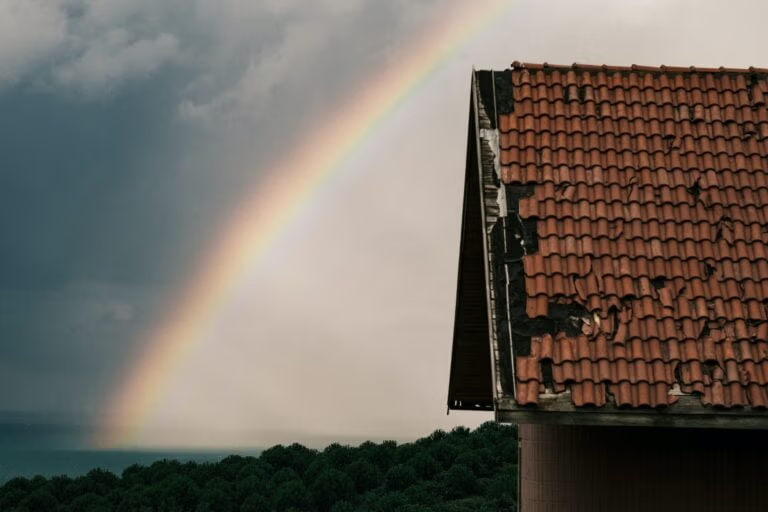To the untrained eye, roofs are unseen and unnoticed until they spring a leak. The fact is that roof issues do not get better with time, and putting off maintenance raises the risk of even bigger problems down the road. Roof inspections typically reveal both predictable and unexpected issues. Most building owners think they need to hire a roofing consultant or specialist to do routine checks. Site managers or facility staff with a full checklist can do most inspections quickly and effectively. Here are the most common problems found during roof inspections.
Common Causes of Roof Leaks and DamageLeaking Roof
Leaks are one of the most common problems found during roof inspections. This can occur for a number of reasons, but it is still annoying. Leaks in the roof, if left unrepaired for too long, might lead to expensive repairs or even structural problems. Regularly inspecting for water damage is important since there are a number of potential causes for a leaky roof.
The flashing surrounding your chimney, the gutters and skylights, the valleys, and the vents are common places to find water damage or leaks. The most common causes of roof leaks include broken flashing, damaged shingles, and cracked tiles or slate. If you find any evidence of a roof leak, it’s best to have a professional take a look.

Damaged Shingles
If a shingle is missing in part, it is best to replace the whole piece right away. Shingles can get damaged if they aren’t put on right or the edges aren’t fastened well. Extreme weather conditions may also contribute significantly to shingle damage. High winds may easily tear the metal flashing away, leaving the roof exposed and vulnerable to damage.
Damaged and missing shingles are a usual sight at run-down houses. If you’re renovating a run-down home, make sure to fix it up completely. It is also critical to ensure that there is enough ventilation around your roof. This will prevent moisture from entering the shingle.
Splitting
Your roofing materials, including the structure itself and the materials used to cover it, may shift and change shape over time due to weather and other external factors. For instance, if you live in a particularly hot climate, the shingles on your roof may expand to the point where they crack. There’s a considerable chance they’ll totally distort the roof if they keep crashing into each other.
Therefore, it is crucial to arrange them in such a manner as to prevent direct contact while finding the ideal balance to guarantee they are securely protected. As they expand in severe weather, it’s important to tighten them, so they don’t break.
The Problem with the Downspout
It is recommended that downspouts send water four to six feet away from the home’s foundation. This is a common issue that might lead to a major disaster. Water flowing from the downspout might severely weaken the foundation of the house if it is directed toward it.
With a negative gradient or insufficient drainage, even a few inches of rain can result in millions of gallons of runoff that has nowhere to go but into the basement, crawlspace, or foundations of a building.
Specialist gutter installers frequently place downspouts close to the house’s base. To prevent water damage to the structure’s underpinnings, it is the homeowner’s obligation to set up subsurface plumbing, splash guards, or extension pipes.
Most homeowners don’t learn this fact until after the technicians have already visited and departed their homes. Localized flooding caused by downspouts discharging too close to the foundation might cause foundation issues if left unchecked.
Clogged Gutters
For most houses, especially those surrounded by tall trees, clogged gutters are an annual nuisance. It’s possible that the gutters will get clogged up with the wilting leaves from these trees. Additionally, fly-in debris from the outside, such as pieces of broken glass, can obstruct them.
Maintaining and cleaning your gutters regularly can keep them in good condition and prevent water damage to your home. The best way to keep gutters from becoming clogged is to install screens over the openings where twigs and leaves may otherwise enter the guttering system.

Flashing
The flashing on your roof is the material that goes over the joints and seams. Its primary function is to divert water away from your home’s most vulnerable areas, such as walls, chimneys, and dormers (small rooms that protrude from the roof).
According to professionals at golansmoving.com, incorrect flashing installation is one of the most common problems found during roof inspections. The flashing may have fallen loose or curled because, for instance, the seal was lost or inferior materials were employed during installation. In certain cases, the age or quality of the flashing may be to blame.
Flashing degradation takes some time to become an issue, but a roof inspection is the fastest way to fix the problem. Tears in the sealant, while seemingly minor now, might cause a major problem down the road. Until the roofer gets there, you can stop a leak with roofing cement or tar.
Inadequate Ventilation
An essential part of your home’s air circulation system is the roof. It’s possible for issues to arise on the exterior and inside of your home if the ventilation system malfunctions. Due to inadequate air circulation, moisture builds up in your attic, increasing the warmth inside your home.
Sheathing rot, shingle deterioration, insulation problems, rafter structural damage, and high energy bills are all possible results of this. In the winter, ice dams pose a risk to both property and people. Whether or not your roof’s ventilation meets building codes may be determined with a roof inspection, but if you find problems, you should always fix them.
In Conclusion
Most of these problems found during roof inspections are easily identifiable by a home inspector, but it’s not their job to figure out if the roof is structurally sound or to give an estimate of how long it will last.
If you want a more thorough roof evaluation, you should hire a structural engineer or roofing expert. If you’re worried that the house’s roof could be in need of repair, you can get a more in-depth inspection from a professional.



